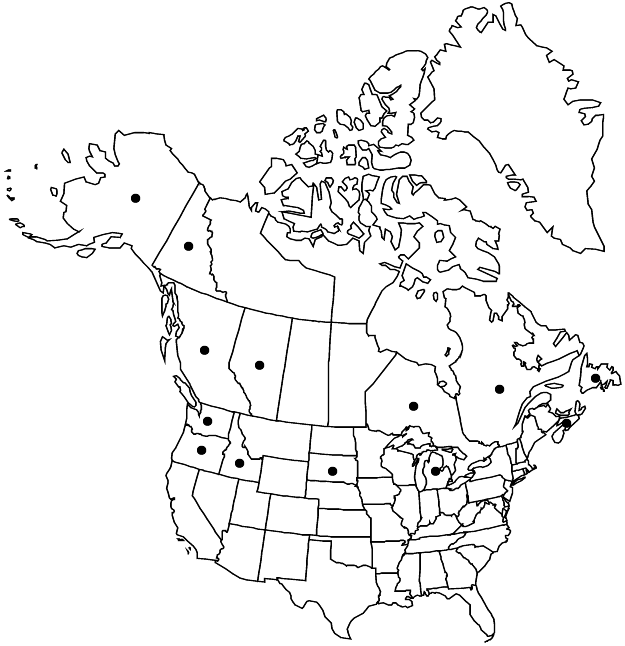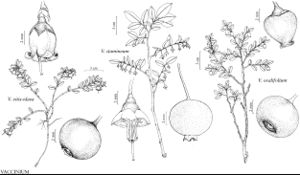Difference between revisions of "Vaccinium ovalifolium"
in A. Rees, Cycl. 36: Vaccinium no. 2. 1817,.
FNA>Volume Importer |
FNA>Volume Importer |
(No difference)
| |
Revision as of 20:27, 24 September 2019
Plants crown-forming, clumped, suckering when disturbed, rarely forming extensive colonies, 3–40 dm, not rhizomatous; twigs yellow-green or golden brown, glaucous, usually terete, sometimes somewhat angled, glabrous, sometimes hairy in lines. Leaf blades pale green or glaucous abaxially, slightly darker pale green adaxially, ovate to elliptic, rarely obovate, 25–39 × 16–20 mm, margins entire to obscurely serrate, abaxial surface glabrous, eglandular (sometimes hairy or glandular along midvein), adaxial surface usually glabrous (sometimes hairy and/or glandular). Flowers: calyx pale green or glaucous, lobes vestigial or absent, glabrous; corolla pink, bronze-pink, or greenish white, globose, sometimes urceolate, 5–7 × 4–5 mm, thin, glaucous; filaments glabrous or pilose basally. Berries blue, dull purplish black, or black, sometimes glaucous, 8–10 mm diam. Seeds ca. 1 mm. 2n = 24, 48.
Phenology: Flowering spring-mid summer(-late summer).
Habitat: Moist or mesic coniferous woods, transitional habitats adjacent to these coniferous stands, cut-over coniferous woods, verges of road cuts, margins of coniferous woods, peaty slopes
Elevation: 0-2100 m
Distribution

Alta., B.C., Nfld. and Labr. (Nfld.), N.S., Ont., Que., Yukon, Alaska, Idaho, Mich., Oreg., S.Dak., Wash., e Asia (c Japan, Kamchatka).
Discussion
Selected References
None.
